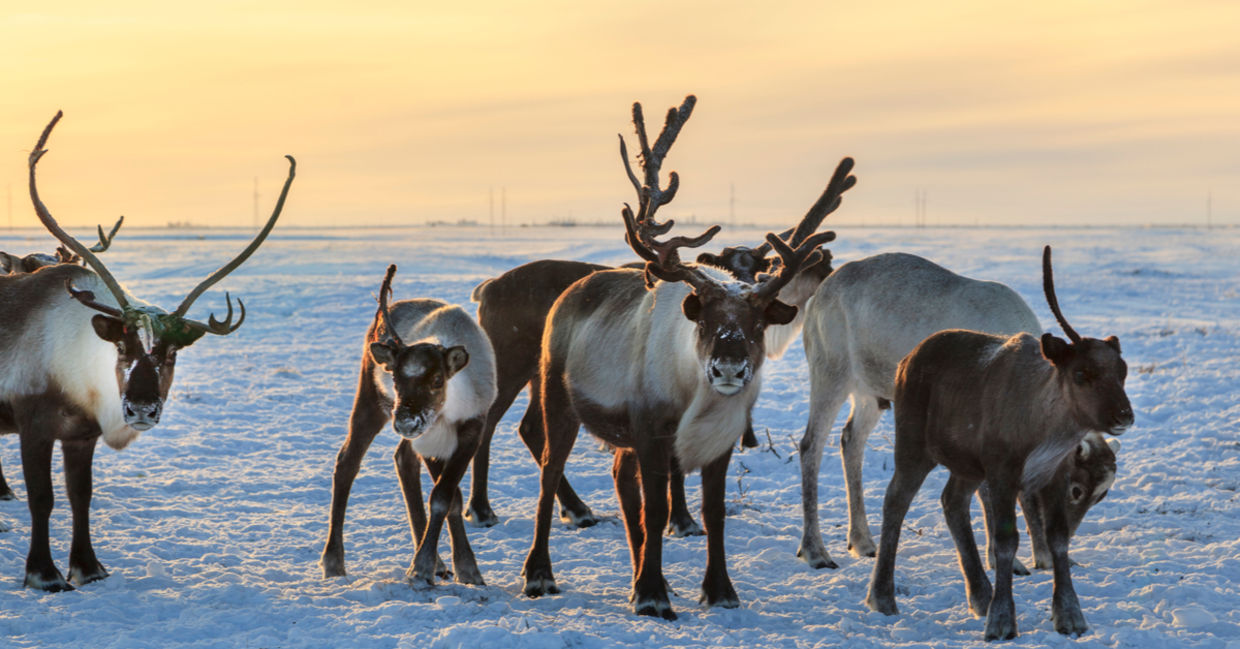
(evgenii mitroshin / Shutterstock.com)
Herds of reindeer, horses, and bison could soon be thundering across the frozen ground in places as far north as Siberia. That’s because reintroducing these grazing herbivores can slow down the rate of permafrost thawing and slow down global warming.
A new study conducted by Professor Christian Beer the University of Hamburg consisted of a computerized simulation that replicated the conditions of the Arctic permafrost soil. This study, according to CBS News, found that if there are enough animals resettled into the arctic, 80 percent of the permafrost soil could be preserved until at least 2100.
This study was inspired by an experiment in the Siberian town of Chersky that was featured on CBS News’ 60 Minutes. The episode introduced viewers to a controversial scientist Sergey Zimov who predicted 20-years-ago that because of the warming climate of the Arctic region, the melting permafrost would release greenhouse gasses that have been trapped in the soil for thousands of years. This would increase the amount of warming and start an endless loop.
The Pleistocene Park Experiment – named for the last ice age – was a way to see if grazing animals thundering across the land would disperse the snow and help chill the soil. While the experiment has proven successful, 60 Minutes said Zimov was scoffed at 20-years-ago and was not able to get his scientific papers published.
Now, scientists are taking his warning seriously. A 2019 study that was conducted by scientists at Woods Hole Research Center in Massachusetts and published in Nature Climate Change showed that 1.7 billion tons of carbon was released from melting permafrost between 2003 and 2017.
This changed the Arctic from being a net sink that absorbed carbon into a net source of emissions that are contributing to climate change. If unchecked, there would be a 7-degree increase in permafrost temperature that would cause half of it to melt by 2100.
Max Holmes, a leading climate scientist and deputy director of the Wood Hole Research Center told 60 Minutes that Zimov's key discovery was that Siberian permafrost held far more carbon than anyone knew. “The estimates of how much carbon is locked up in permafrost keep going up.”
Now, Beer’s study shows that most of the permafrost can be preserved if the tundra is repopulated with grazing animals. "This type of natural manipulation in ecosystems that are especially relevant for the climate system has barely been researched to date, but holds tremendous potential," Beer told CBS News.
But how realistic is it to repopulate the number of animals necessary to make a difference? Beer admits that he is not sure but that the research is promising. “Today we have an average of five reindeers per square kilometer across the Arctic. With 15 [reindeer] per square kilometer we could already save 70 percent of the permafrost according to our calculations.
"If theoretically we were able to maintain a high animal density like in Zimov's Pleistocene Park, would that be good enough to save permafrost under the strongest warming scenario? Yes, it could work for 80 percent of the region" said Beer.
Beer intends to continue his research and to collaborate with biologists to see how animals can be resettled in large enough numbers across the arctic to make a real difference. Letting nature heal nature can be a very important part of saving our planet.
YOU MIGHT ALSO LIKE:
Canada Creates Conservation Area to Protect Arctic Lands and Waters
Smart Government Policies Lead to a Drop in CO2 in 18 Countries
How Former Poachers are Working to Save Russia's Snow Leopards







